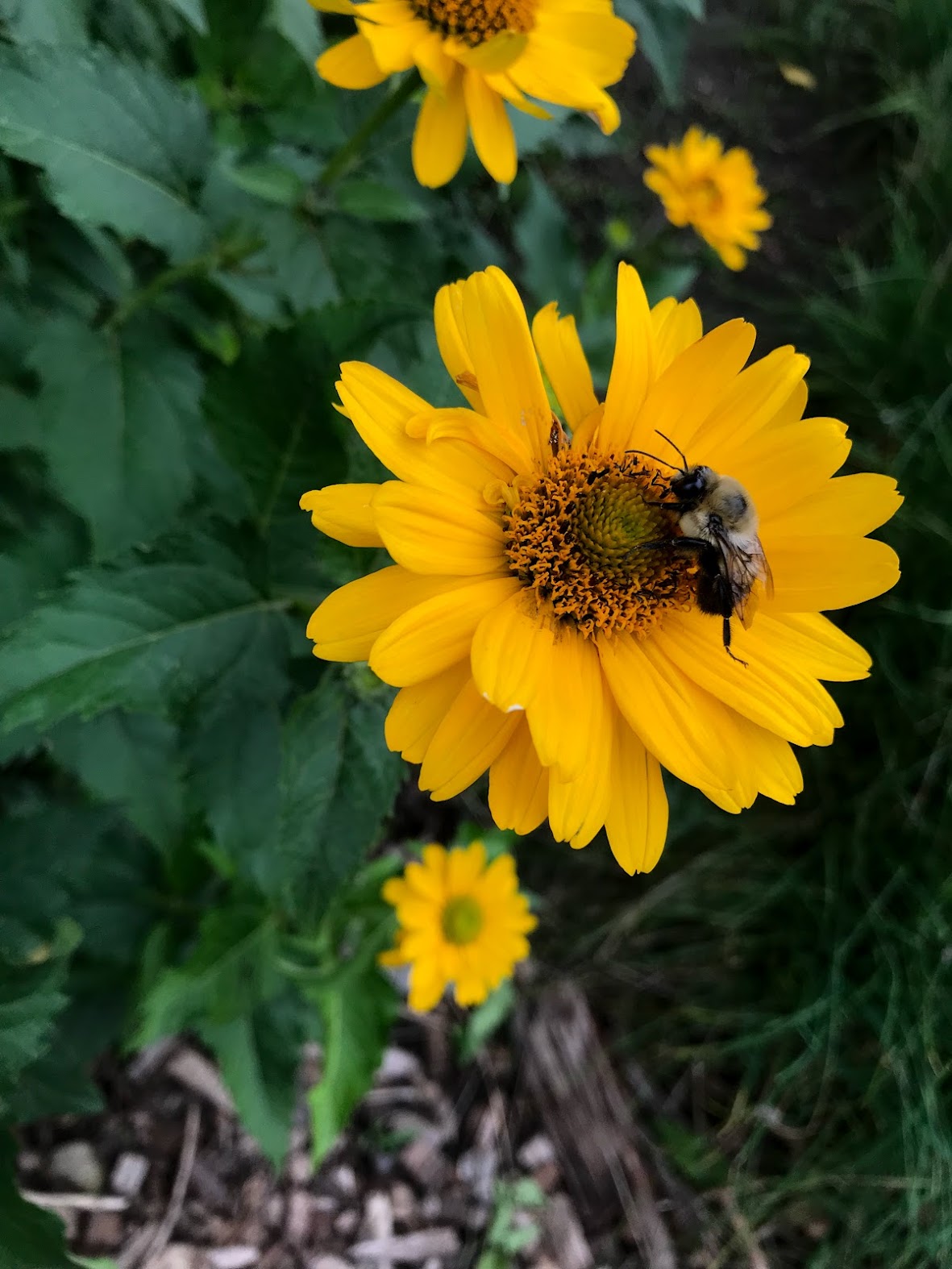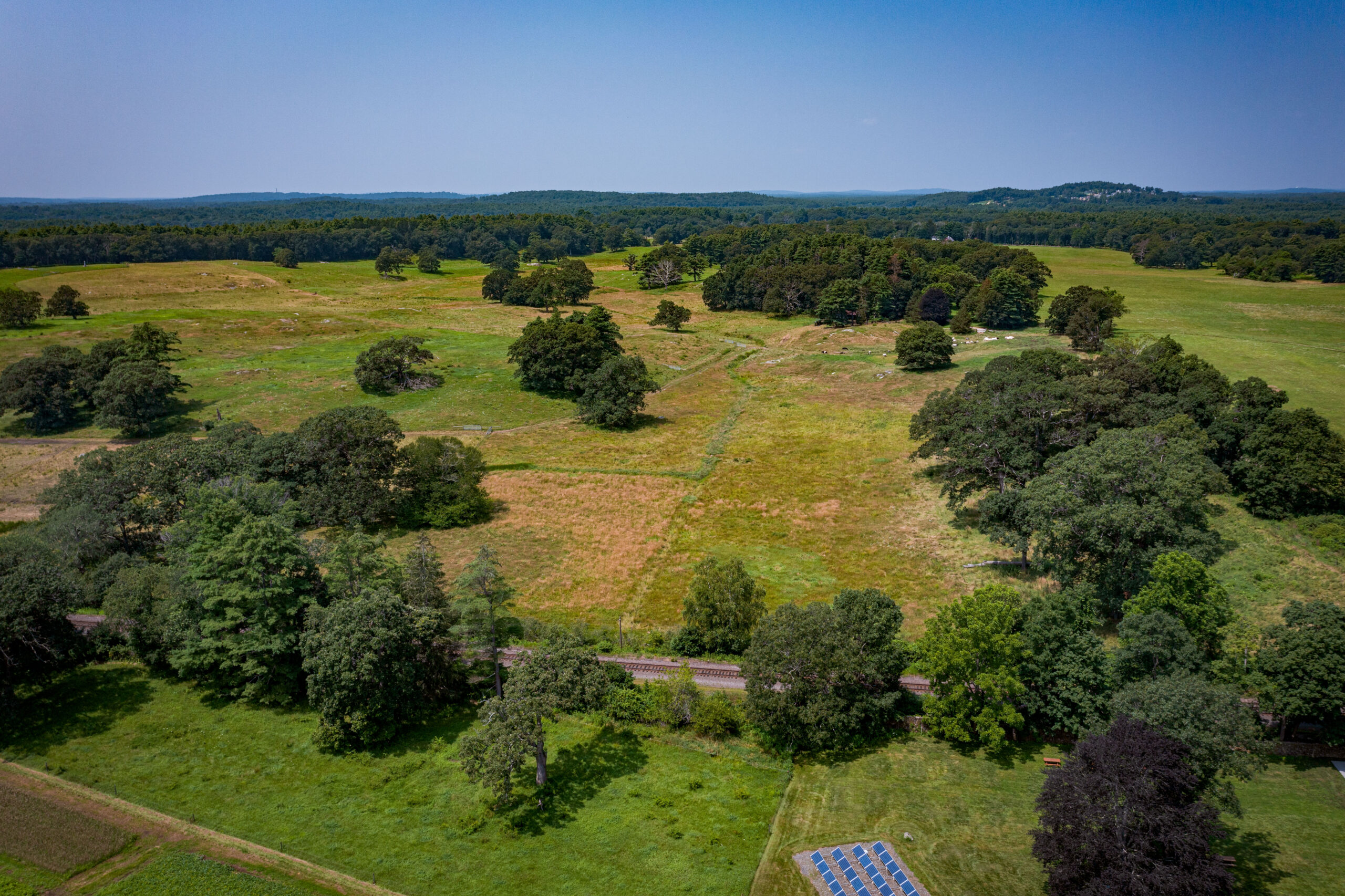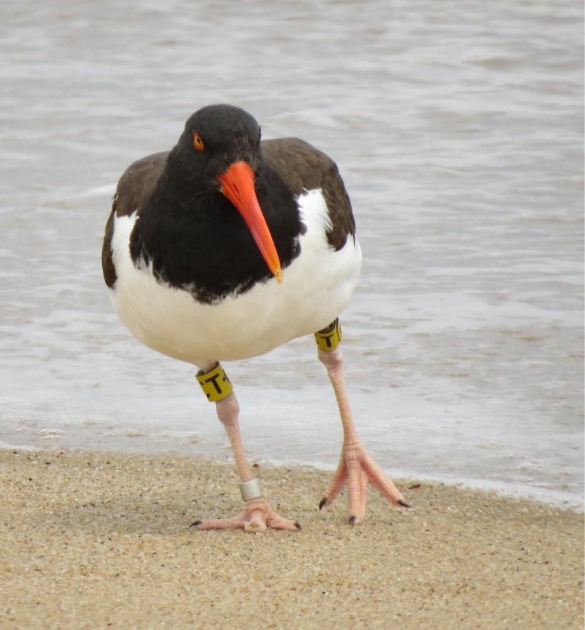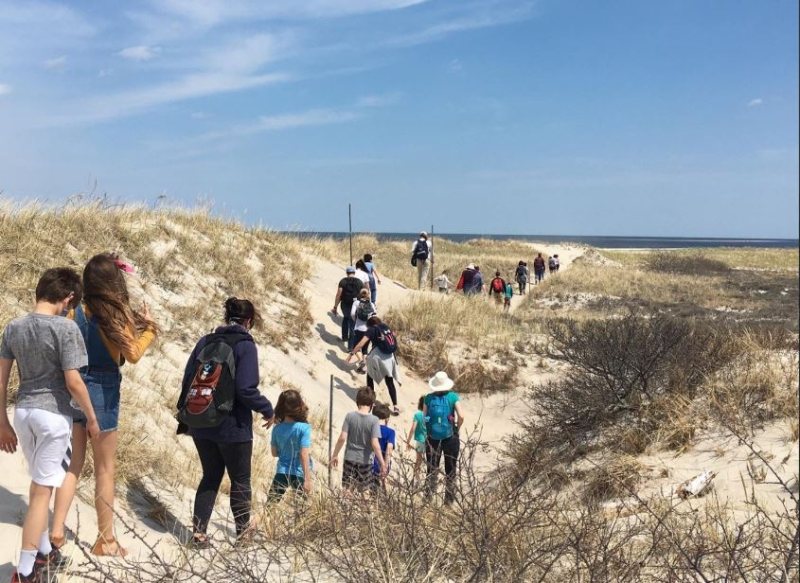Since 2018, researchers with Tufts University have been utilizing Appleton Farms, Appleton Grass Rides, and Greenwood Farm, all located in Ipswich, to study the nesting biology of bumble bees.
Despite the critical role they play in pollinating crops and natural ecosystems, researchers know very little about the bumble bee life cycle, nesting behavior, and population changes over time. Bumble bees nest below or just above the ground, and their nests are notoriously difficult to find and study.

In the past, researchers have tried using several forms of data collection to gather information about bumble bee behavior. Methods have included citizen scientists, genetic sampling, and tracking bees with telemetry (automatic collection, transmission and measurement of data from remote sources, using sensors and other devices to collect data). Researchers also trained dogs to sniff and find enough bumble bee nests to study their behavior and populations. These methods were all met with minimal success.
In 2018, Dr. Genevieve Pugesek and Dr. Elizabeth Crone, in partnership with The Trustees, began searching for bumble bee nests at Appleton Farms using survey techniques adapted from “catch and release” surveys of birds and vertebrates. Dr. Pugesek and her field team spent 150 hours searching for bumble bee nests within 30 designated plots. Researchers searched for both new nests and previously discovered (“recaptured”) nests. In their first year, they found over 30 bumble bee nests—a number that exceeds any previous search efforts by a single team in one field site.

Researchers have continued to survey bumble bee nests each summer, and over six years have found nearly 100 bumble bee nests through structured surveys in designated plots. Additional searches outside those plots at Appleton and Greenwood Farms, in what researchers call “free searches”, have nearly doubled that nest count.
When researchers find bumble bee nests, they can identify the colony that lives in the nest, record the habitat where they are found and the type of ground cover over their nests, and estimate colony size. Researchers can monitor the nests over the season to observe how frequently bees are bringing back pollen to their nests, when colonies enter reproduction and produce new queens that will start nests in the next year, and where these new queens bury themselves to hibernate for the winter (in insects, this hibernation is referred to as diapause).

Researchers have returned to nests in the winter and estimated overwintering queen survival – a first-ever study of survival outside the laboratory. Now, in the seventh year of data collection, researchers can start analyzing how changes in climate—like more frequent drought—might be impacting bumble bee populations.
Several of the sampling areas are in Trustees hayfields. Researchers have been communicating with Agroecologist Alejandro Brambila and with our livestock managers on location and timing of surveys, and what is going on with management (haying) of these fields.
“Results of the researchers’ work can potentially provide interesting information about which bees prefer these fields, how they use them, and how they respond to different management styles over the years,” Alejandro shared. “Grasslands (including hayfields) provide important habitat (nesting and forage) for bees and other pollinators, and we are working to continuously improve the habitat value of these fields – farmed or otherwise.”
The ongoing bumble bee research at Appleton and Greenwood Farms is a one-of-its kind project that is providing important information about population density, habitat needs, and nesting behavior of bumble bees—information that is essential to effective management and conservation of our pollinators.



